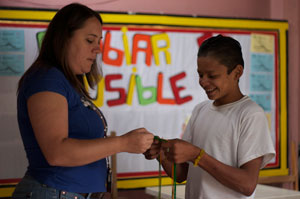
Coke, Pepsi, Gerber, read the labels on their bottles and jars, but Honduran street kids aren't hustling daily for soda pop or baby food. They recycle the containers to carry an acrid, viscous, amber-coloured industrial grade glue that is cheaper than crack, gets them higher than cocaine, and costs just $15 Lempira ($1 Canadian) a hit. An eight-year-old can scrape that up, and they do.
I watch as some of these well-worn glue-receptacles are passed through the second gate at the Médicos sin Fronteras (Doctors Without Borders) Centro Terapéutico de Dia in Comayagüela (CTDC), a barrio adjacent to the Honduran capital of Tegucigalpa. Entry guard Gerson David lines them neatly in a fortified drawer behind his station. It's like a coat check -- the kids can pick them up at the end of the day. After emptying their pockets and handing in their glue, the visitors -- a Latino line-up of Dickensian teenage scruff -- are frisked, scanned by a metal detector, and allowed to enter. Once inside, they each take a piece of white soap from a bowl at the entrance to the outdoors communal activity area and head to the showers. Most of them need it.
The program, until recently overseen by MSF mission head Sylvie Pouit, was started in 2005. It delivers medical, psychological, educational, and social assistance to drug-addicted Honduran street youth between the ages of zero and 25 -- but the staff have no illusions. They understand that it takes more than a day program to get street kids with no family or support off drugs. However, keeping them occupied for any number of hours helps take their minds and bodies off getting high. The longer they're there, the better. It's not a complicated plan.
Pouit, who has worked with MSF in El Salvador, Congo, Burundi, and Guinea, scoffs at the state-run children's services, which are notoriously ineffective. "It's like a prison, and moralism doesn't really help," says the Parisian from behind her desk at the Tegucigalpa-based MSF headquarters. "These kids aren't write-offs, they're there for a reason. We give them a little sweet in their lives. If we can alleviate their suffering, it's a big thing."
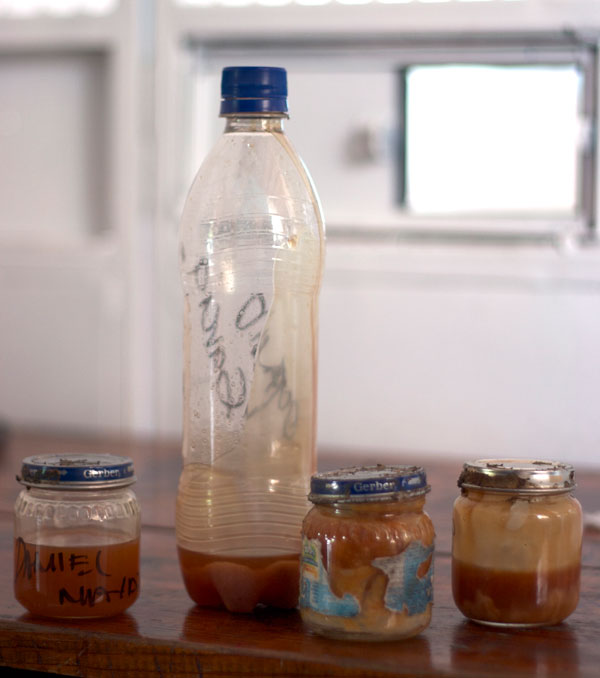
MSF's prime mission isn't political or religious, setting it apart from most of the other social services available in the Honduras. Started in 1971, the non-profit functions as an international humanitarian aid organization that provides emergency medical assistance to threatened populations in more than 70 countries. It works with the disregarded and neglected, many of whom don't generate the charitable attention that more sympathetic social issues do, like civil war or malaria.
Prior to arriving in Honduras from British Columbia, I hadn't heard anything about the glue sniffing problems in Latin America. A similar plight of the Innu in Labrador had made headlines in Canada, and further research indicated that the inhalation of cheap solvents is popular with children around the globe. Even in my vanilla Victoria childhood, rumours circulated around the rubber cement that we used to glue coloured feathers to our paper mache Thanksgiving turkeys. We didn't quite know what it meant, but it was there, a dark hype around an accessible olfactory art drawer specialty. As far as I know, most of us stuck to sugary powdered Fun Dip and licorice, but it goes to show how early the notion of drugs first enters our worlds.
According to a CBC documentary on the Innu, one year of huffing gas is the equivalent of 25 years of hard drinking. Like almost all of the Innu huffers, glue sniffing Honduran street kids don't live at home because of rampant neglect and abuse. They are political orphans; many don't have identity papers or any idea of how to earn a normal living. They have adapted to their harsh environments with the help of the inhalants that stave off hunger, cold, and loneliness.
Among the forgotten
I leave the office wearing a clean, white MSF vest, with a driver in a clean, white MSF van with large stickers on its side panels. "No Armas" (No Weapons). We drive to the squat CTDC building in Comayagüela, a barrio neighbourhood of Tegucigalpa that was badly damaged by Hurricane Mitch in 1998. It wasn't prosperous before the hurricane, and it hasn't recovered. Like the rest of the city, it is dusty, littered with garbage, and poor. A number of church-run safehouses have been established in the neighbourhood, making it a natural watering hole for the street kids. It's become the place where the forgotten come to be remembered.
Like the others, I am frisked before entering. The complex is divided into two sections. To the right is an open dirt field flanked by an arts and crafts hut, manual laundry tubs, clotheslines and the boys' shower room. I am told the girls' shower facilities are hidden behind another wall for privacy. Two men in their early twenties look up from the craft table where they struggle to keep their crayons within the lines of their Dora the Explorer colouring books. Their hands are trembling, uncooperative.
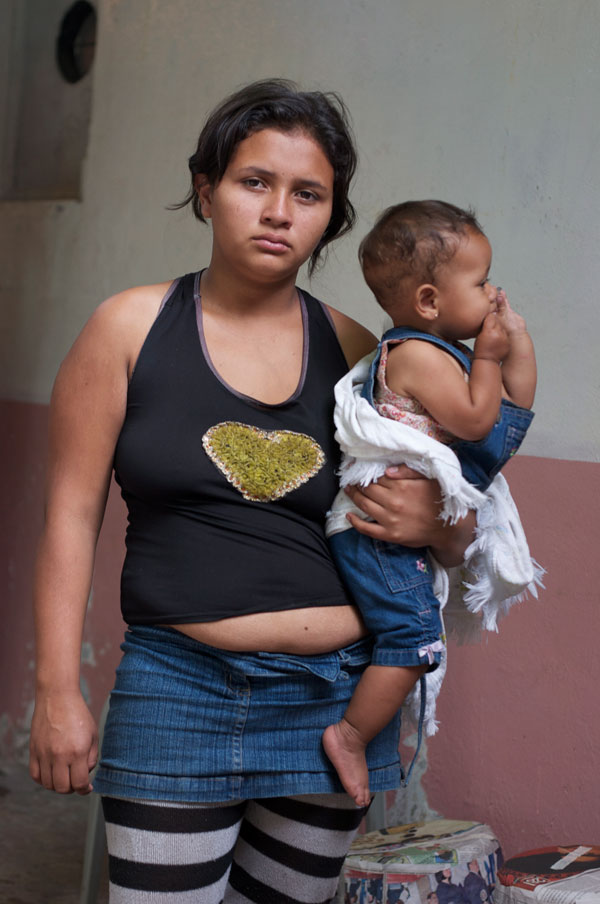
To the left are the staff room, two psychology rooms, two medical clinics, a pharmacy, infirmary, and a social work area. The program currently serves 300 youth and has a staff of 30. On this day, Italian Maurizio Ricci is the program head. The 42-year-old civil engineer managed a satellite call centre before joining MSF seven years ago. He specializes in training for non-violent action, which has given him a rock solid base to deal with the instability of these kids. This is his fifth mission, and his first city station. He has been twice in Angola and twice in Sudan -- always in rural and conflict areas. Before MSF he worked in Nigeria with women exposed to sexual violence. He has serious grey eyes and a nonchalant smile, "This is obviously my line of work."
Working off the statistic that the most violent males on the streets are those between the ages of 17 and 25, MSF expanded the age bracket to include older youth. "One of our objectives is to promote the idea of self-care to each of the teens, to reduce the illegal substance abuse, exercise self-control and build self esteem," Ricci says. "There are all sorts of methods that end the atmosphere of violence for the teenager. It's very hard to offer an alternative to people whose main objective is to go back to the streets."
Standing by the entryway, I can watch the jostling crowd of youth shoving each other around outside the gates. They are impatient to enter. A curly redhead jets by, grabbing my free hand and ringing it vigorously. A tiny boy with a face rash follows suit. Black-eyed Wendy blasts in, throwing her hands in the air dramatically and wiggling her hips while she's frisked. Jasmine follows, looking shy and clutching a blue toilet seat cover. They fight almost immediately inside the gates, pulling hair and throwing hard punches before being pried apart by two male MSF workers. The girls are crying, frustrated. Jasmine, identified as the instigator, is asked to leave. David points to a list written in huge letters by the gate. Rule number two highlights self-control and no violence. She picks up her toilet seat cover and leaves, uncomplainingly. They remind her that she is welcome back the next day.
"You have to be very careful the way you define street children -- they're not children in the streets, they are children from the streets," Pouit had said. "Children of the street are like lions, so it's very important to establish relationships with them, if they allow you to, although they don't like it to, so you have to learn to negotiate with them."
The youth that use the program understand negotiation. They are surprisingly pliant when it comes to learning how to adapt to public norms. While there, they are asked to play by the rules of society, exercising patience and politeness with others. If they don't, there are consequences, which include cleaning, service restrictions, or the most extreme -- being kicked out for the day. According to Ricci, most of the time they impose their own consequences for bad behaviour, giving themselves a time-out from a game or taking on a chore without asking. He believes they are good kids making the best of an impossible situation.
"With them, you never have to lie. They understand," he says. "It's totally possible that when you meet them here, you would never think of them as the ones in the street. If you meet them in the street at night, you would never recognize them from here."
Steady hands in demand
By 9 a.m. the centre has been open for an hour. Around 40 kids have checked in, their bottles line the shelves of the locked cabinet and wet clothing drips from the line. The air smells like soap and that perfumey laundry detergent smell unique to Latin America. In the shade of the courtyard, one male teen helps another shave with a pink plastic Lady Bic -- his hands are steadier than the other's, which clench and tremble in his lap. The neurological effects of the glue are violent and permanent.
"Some of the pathologies and damages are secondary effects of drugs, the glue sniffers usually generate neurological damage and you get into a case when you're completely limited, even your movements. You also have cardiac damages and respiratory diseases in the first phases," says Dr. Cynthia Gomez, the Centro's physician. "There are certain pathologies or cases where they are reversible as long as they are in treatment and stop the consumption, but the neurological damages are completely irreversible. We have a lot of children with big problems regarding their equilibrium or movement, where they can't even grab a glass of water, and these cases are irreversible."
Many of the other health concerns in the youth stem from violence and accidents related to the blurred or double vision experienced by the glue sniffers. Rape is another commonality, as is prostitution in exchange for drugs. The line between the two is obscure. Lead psychologist Julia Bartsch walks me into the girls' shower area to speak to the women in private. On every wall there is a poster advising "Sexo con Amor" (sex with love). Most of the girls have never known a tender moment with a man. Their bodies are a flesh currency, and whether they give it, or it's taken from them, it's not about love. The program works to reverse that, teaching personal boundaries and how to safeguard their sexual choices.
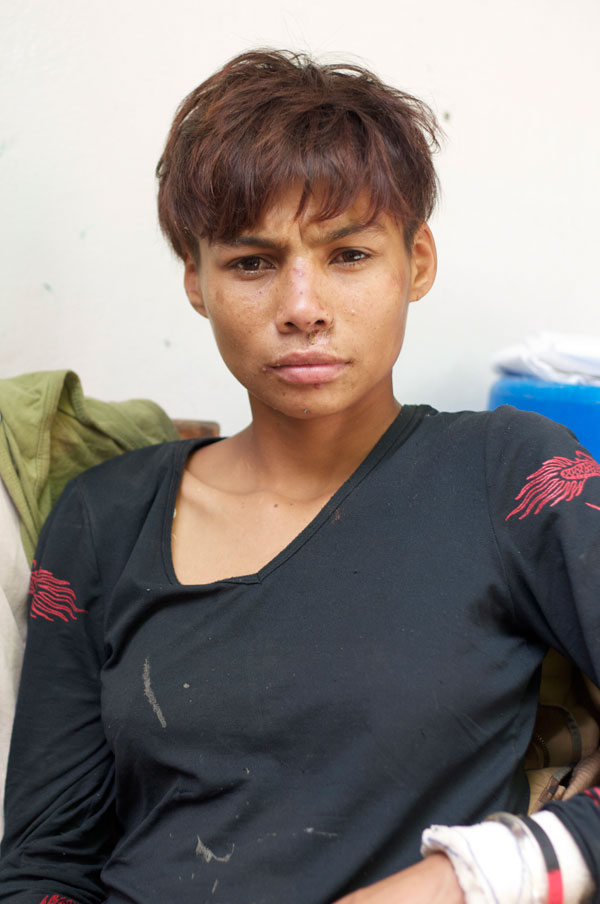
"I think it's harder for women in the streets, they have to protect their sexuality. When I was raped I came here to these doctors and they gave me treatment and medical support. I was here for about a month, on medication all day," says 24-year-old Miriam, who has been living in the streets since she was nine. She has a shaved head and broken teeth. I mistake her for a boy. She pulls up a pant leg to show me why she's limping, revealing a purple, swollen foot and ankle -- the result of a recent fight. Above it is a scar from where her shinbone tore through the skin when she was shot. She used to rob and assault people with a machete, but says she now does odd jobs instead. "This life is very difficult. But after a time you get used to it. The fact is that the streets provide you with friends but you're always running a risk."
Over 800 youth have used the program since its inception. To help build skills that can be transferred to the workplace, the youth advance through a four-tiered system focused on improving their attention skills, promoting the idea of self-care, reducing illegal substance abuse, exercising self-control and building self-esteem. These are methods that end the atmosphere of violence for the teenagers by giving them alternate ways to occupy their time. They are encouraged to participate in organized activities like theatre, sports, and games to help identify special skill sets and interests. If a young person shows strength in any given area, the program molds its activities to bolster that specific talent.
"Some of the kids have been on the streets for 15 years -- their whole lives. They can hope for jobs cleaning up garbage at malls, or running errands for the vendors at market," says Ricci. "The boys may be lucky and find work as a construction worker or carpenter, the problem is that when they don't find an activity they dedicate themselves to crime. They rob, they become thieves."
'Have you seen any bombs?'
Bartsch has her hands full of yarn. She is sitting with 16-year-old Fredy Cañada, who is making a bracelet. He looks ten. I haven't guessed ages accurately yet today -- these youth all look exceptionally old or young -- their bodies confused by a lack of nutrition and too many drugs.
"You're the only person I know from Canada," he says, flirting. "When I grow up I want to be a pilot in order to take you back to Canada. Have you been to Iraq? Have you seen any bombs?"
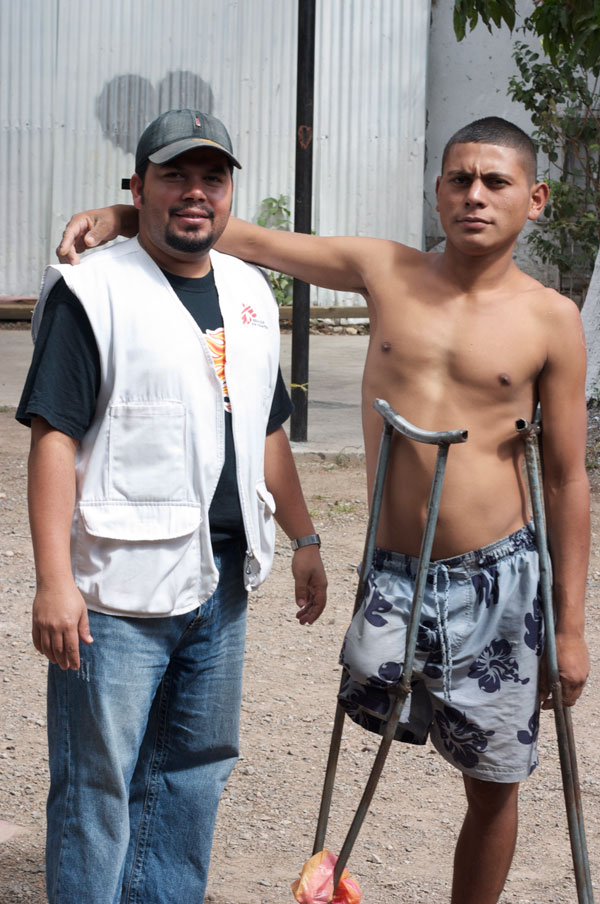
Though he's been consuming drugs for eight years, Cañada's mental faculties are intact. He tells me about his life -- his dead parents, his missing sisters, sleeping at Covenant House, jail. I ask him why he does drugs.
"I started using them because some of my friends told me that drugs are very good, that they cured away every disease from you, so I started using them and now I am addicted," he says. "And now when I'm on drugs I forget every problem that is on my mind. Plus the fact that I don't have anyone to control me, it gives me enough freedom to do them."
For the rest of the day I watch the havoc wreaked from freedom come too early. Dead eyes and chemically-burned lips. A missing leg. Shakes, spasms, and tremors. Knife wounds. Rape babies. I watch as teenagers play with crayons and marbles, attempting a childhood that has come too late. I want to tell them to get out of this city, out of this hell, but I don't; they have found a place to be young again. They have put themselves in the hands of people who look out for their best interest so that for a few hours a day they don't have to. This providence might not match our ideas of carefree youth, but in the bruised smiles of these street kids I catch a glimpse of things to come. ![]()
Read more: Health















Tyee Commenting Guidelines
Comments that violate guidelines risk being deleted, and violations may result in a temporary or permanent user ban. Maintain the spirit of good conversation to stay in the discussion.
*Please note The Tyee is not a forum for spreading misinformation about COVID-19, denying its existence or minimizing its risk to public health.
Do:
Do not: